
3D Map Gets Visits from More Than 10 Countries
The Interactive 3D Map of Towers in la Ribera Gets Visits From More Than 10 Different Countries
Digitization and digital technologies became an integral part of people’s life and economy’s development. However, it is acknowledged that most natural and cultural values that are unique or can actually be seen in a single place, are not subject to digitization yet. This hampers the access to the general public. The issue on how to improve this situation is a common challenge for all regions in Europe. It is clear that conventional approaches do not give the necessary results. Innovative solutions are required so that they could ensure both conservation, promotion and development of natural, cultural and historical heritage. Digitization is an innovative approach the application of which can be addressed to solving a large part of the visible problems in the management of natural and cultural heritage. It is necessary also synchronization with international standards related to the information structure of the digitized objects.
To improve adoption of the digitization policy for natural and cultural heritage and to be prepared the implementation of best practices into the participating regions, according to their needs. The implementation of this common plan for cooperation work on interregional level will contribute for establishing of uniform standards in the mass digitization of natural and cultural heritage.
Regional strategies and plans for better organization of the management and exploitation of natural and cultural heritage. It is expected that inspired by the project results, to implement a number of new initiatives in the participating regions that directly improve 8 policy instruments, related to Growth & Jobs or ETC programmes. All the stakeholders, participating in the project, will benefit from them.
€2,495,282.00
Environment and resource efficiency
OP "Regions in growth",priority axis 6: Regional tourism ( will support the preservation, promotion and development of the cultural heritage in Bulgarian regions) and subpriority "Environment and preservation of natural and cultural heritage and CHH ( part of priority 3 by the partners agreement between EC and Bulgaria).
Justification for selection: the project will improve Regional innovation strategy for sustainable growth as induces addoption of policies in sustainable management of these assets. Natural and cultural heritage are important resourses for sustainable growth in the European regions.
Without digitisation of natural and cultural heritage, the region remains outside the processes of the Commom European Development.
The concrete priority axis of this Operational project related to the project is the number 6 “Conservation and protection of the environment and promote the resources efficiency” In the framework of this priority axis, the investment priority 6d: Protection and restoration of biodiversity and soil and promotion of ecosystem services including through Natura 2000.
The specific objective is 6.4.1: Promote the management, protection and maintenance of natural areas and biodiversity , particularly protected, including measures to reduce the problems of erosion, salinization, desertification, deforestation and low organic matter in soil
Typologies of actions including:
- Initiatives and actions for the enhancement of the environment and natural resources.
- Actions to promote the evaluation of services provided by ecosystems and their economic value.
ROP’s ambition is to achieve Europe 2020 targets for smart, sustainable & inclusive growth Strategic Objectives:
• Strengthen regional competitiveness by developing innovation and ICT
• Protect the environment and sustainable development
• Enhance Transport Infrastructure
• Enhance educational, health and welfare infrastructure
• Human Resources Development, Social inclusion & fight discrimination
Main concern: protection of natural environment, maintenance of particular environmental & aesthetic value areas & exploitation of the rich natural & cultural resources of the area
The Regional Operative Programme 2014-2020 in Romania aims to ensure the continuity of strategic vision on regional development in the country. The Objective Theme 6 of the ROP - Environment protection and promotion of efficient use of the resources - refers to investment priority: Preserving, protecting, promoting and developing natural and cultural heritage. Priority Axis no.5 of the ROP does not contain measures for the digitization and promotion of the cultural and natural heritage.
The objectives grounding the ROP, are oriented to concentrate resources for the competitiveness of the regional economy, to promote technology transfer and exploitation of ICTs. Concerning the supply chain trade/tourism/cultural heritage, it allocates resources for the purchase of services for the technological and organizational innovation, internationalisation and business creation. A set of actions to endorse a regional strategy on the exploitation of its major cultural attractions and museums implementing, new technologies coherent with the proposal aims, is provided.
The objectives of the policy instrument are various investments necessary for successfully using structural funds in Estonia in 2014-2020. The project focuses at measure 5.3 (development of creative industries) and its sub-activities 5.3.4/5 (integrating creative industries with other sectors) and 5.3.6 (raising awareness about creative industries). The project is in line with the investment priority of “strengthening ICT applications for e-government, e-learning, e-inclusion, e-culture and e-health”. The policy instrument should be improved as to widen its scope. The focus related to cultural and creative industries (CCI) does not include digitalization of natural and cultural heritage. Although Estonia is one of the most advantaged countries concerning digitalization (see for example www.eha.ee/saaga) the possibilities and potential provided by CCI in the larger context of e-culture development is largely untouched. Digitalization of heritage should also be linked with tourism, i.e. making the heritage available online and combining the traditional forms of exhibition with the ICT-based possibilities. It will widen the interest in heritage and result in visits to the sites concerned – promoting economic growth through tourism and e-solutions export. The policies introducing ICT applications tackle improving the availability of and access to e-services. The aspects of e-possibilities addressing economic growth and related service export are not elaborated sufficiently.
Priority 2: Enhancing access to and use and quality of ICT
- OE.2.3.2. Increase e-government, e-culture, and trust on ICT. It includes measures to increase the use of ICT by the citizens and companies, to promote new business, e-commerce, and, as consequence, the economic growth. Issues addressed by FSMLRPH:
- Collection and dissemination of digital contents related with Heritage
- Promoting good practices collaborating with Regional Government and other public bodies
- Promoting the consolidation of Regional capacity building around these sectors / activities integration
- Improving procedures of integration and skills associated. Priority 6: Preserving and protecting the environment and promoting resource efficiency
- OE.6.3.1 Promote the protection, promotion and development of cultural heritage It includes measures as actions to keep the integrity of cultural heritage by proper maintenance and management and encouraging the promotion of research, recovery and enrichment of the cultural heritage of Castile and Leon, using digitalization to obtaining a better understanding of the Heritage Issues to be addressed by FSMLRPH:
- Fostering the public-private collaboration between regional, national and international entities in the indicated ambits
- Promoting innovation and integration of activity sectors
- Promoting the consolidation of Regional capacity building around this sector / activities integration
- Improving procedures of integration and skills associated.
OP, priority axis 2: Increased access to information and communication technologies and their application and quality. Internet as omnipresent communication network of information resources and its easily accessible content and services is thus fundamentally changing the way modern society. By digitalization of natural and cultural heritage, we could give better protection, better access to different target groups, and greater compliance with international standards, greater connectivity and digital inclusion of Slovenian cultural and natural heritage in Europe's environment.

The Interactive 3D Map of Towers in la Ribera Gets Visits From More Than 10 Different Countries

Stakeholders Meeting in Harghita County, Romania
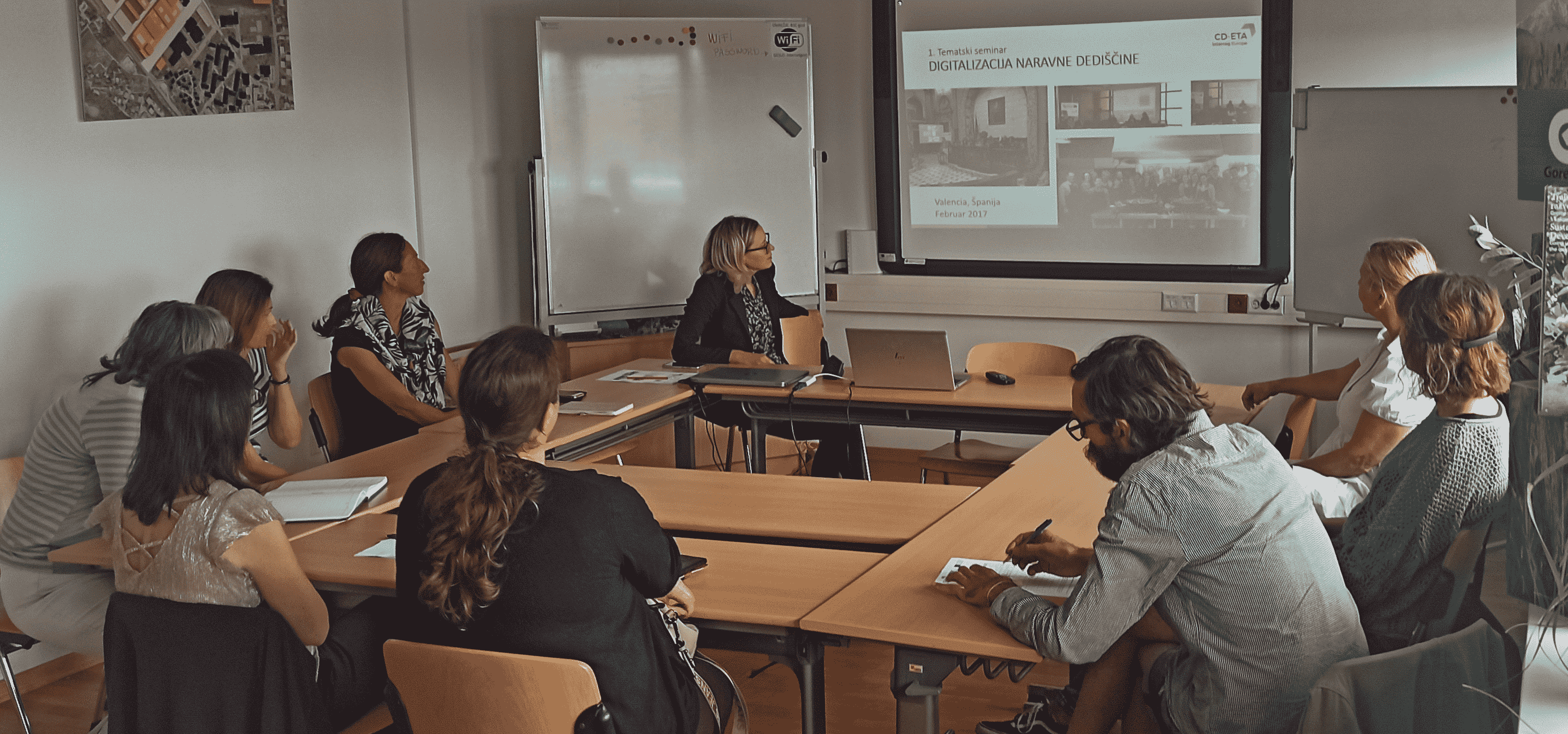
Stakeholders group meeting of Gorenjska held on September 14th 2022
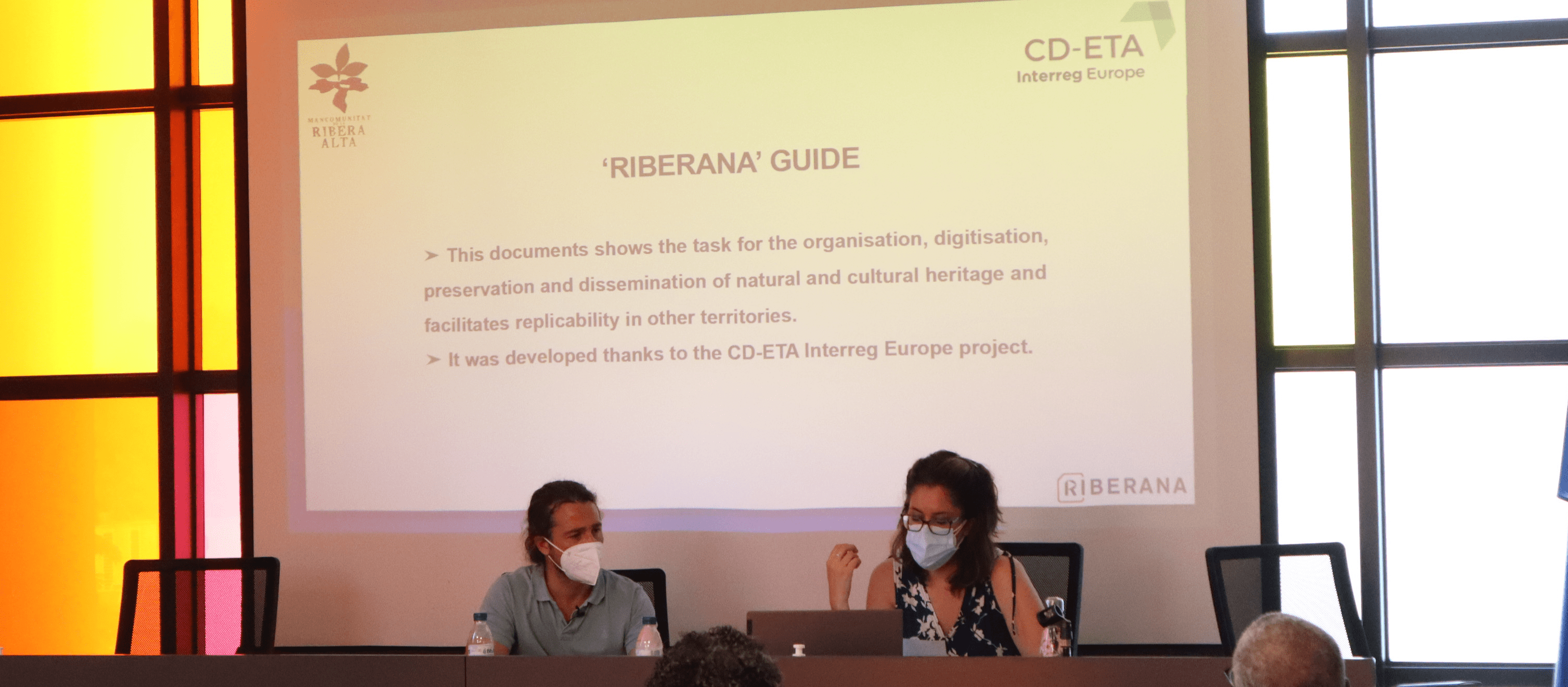
MANRA Disseminates the CD-ETA Knowledge Transfer
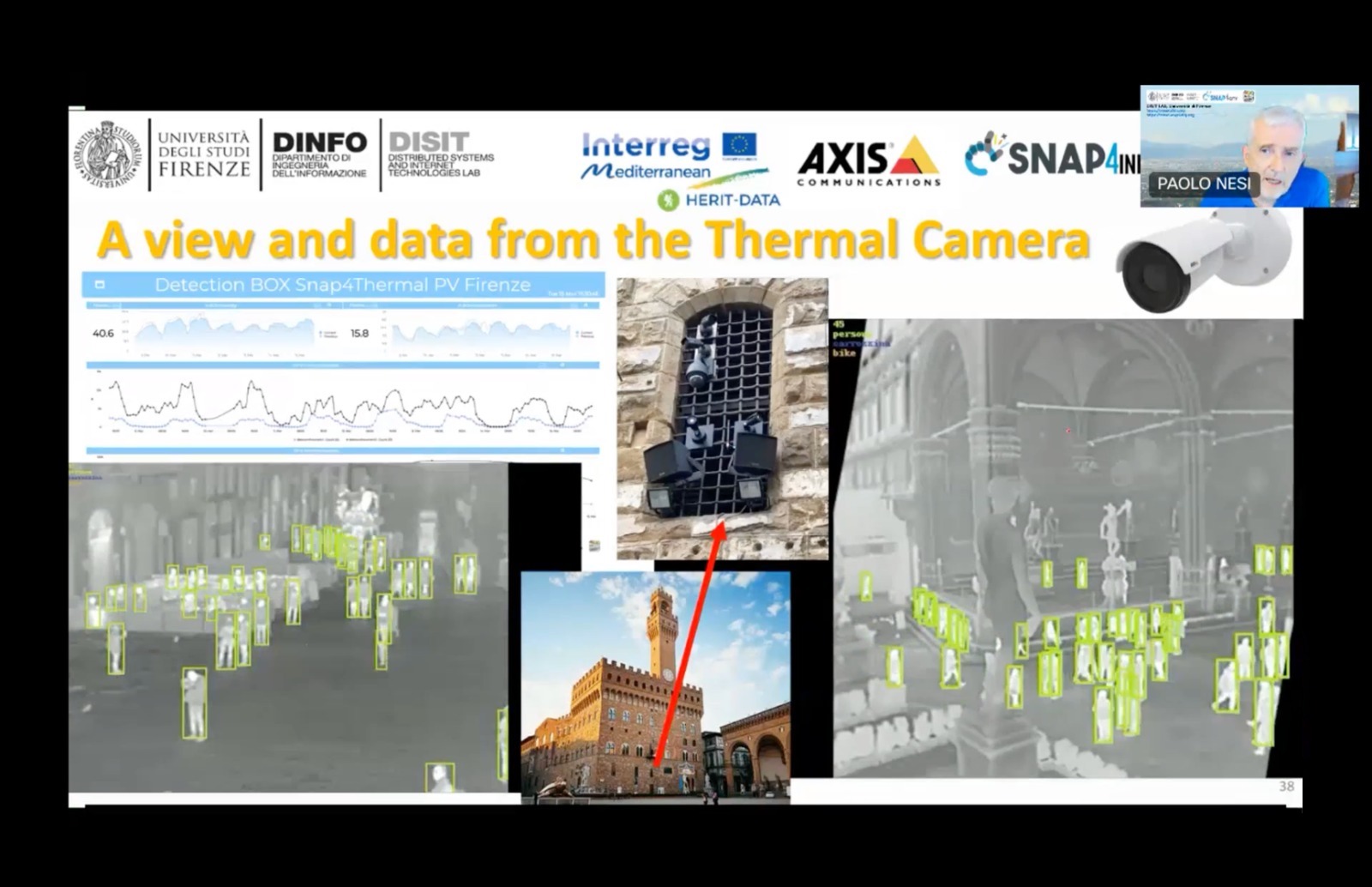
Foundation for Research and Innovation held second Stakeholders meeting within the frame of CD-ETA add-on, Interreg Europe 5th restricted call
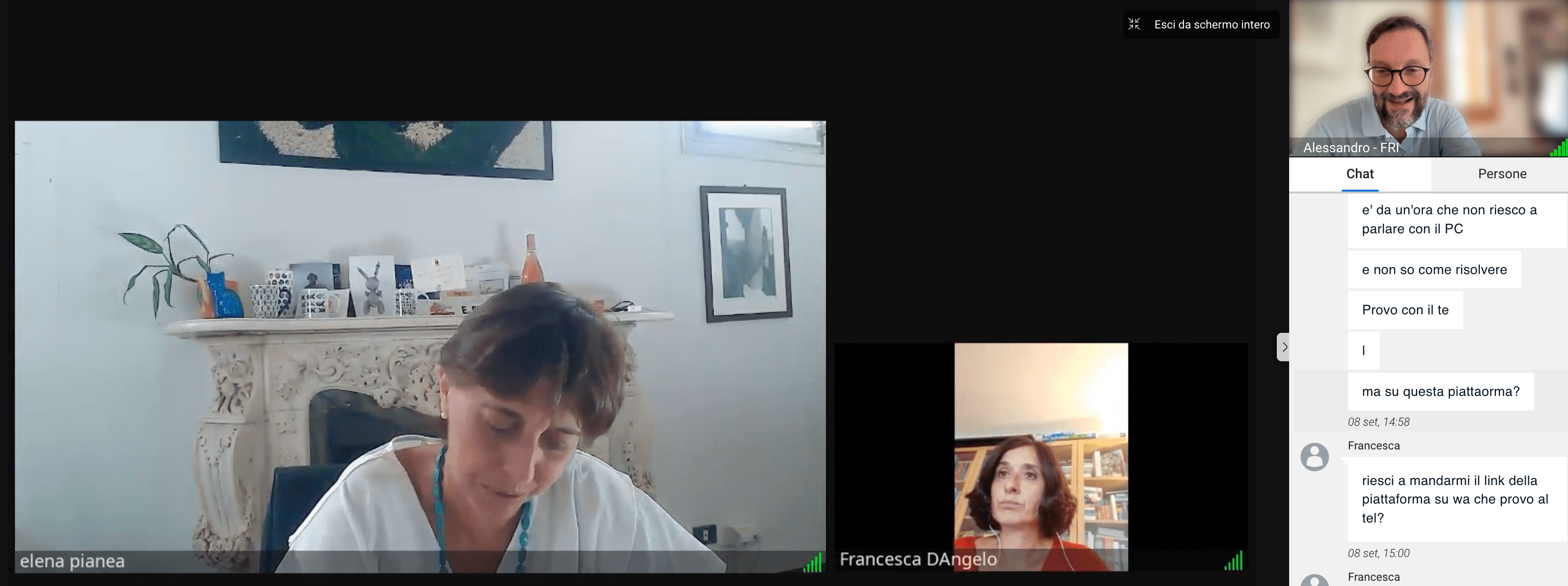
Stakeholders meeting, September 8th, 2022. Foundation for Research and Innovation, Florence - Italy
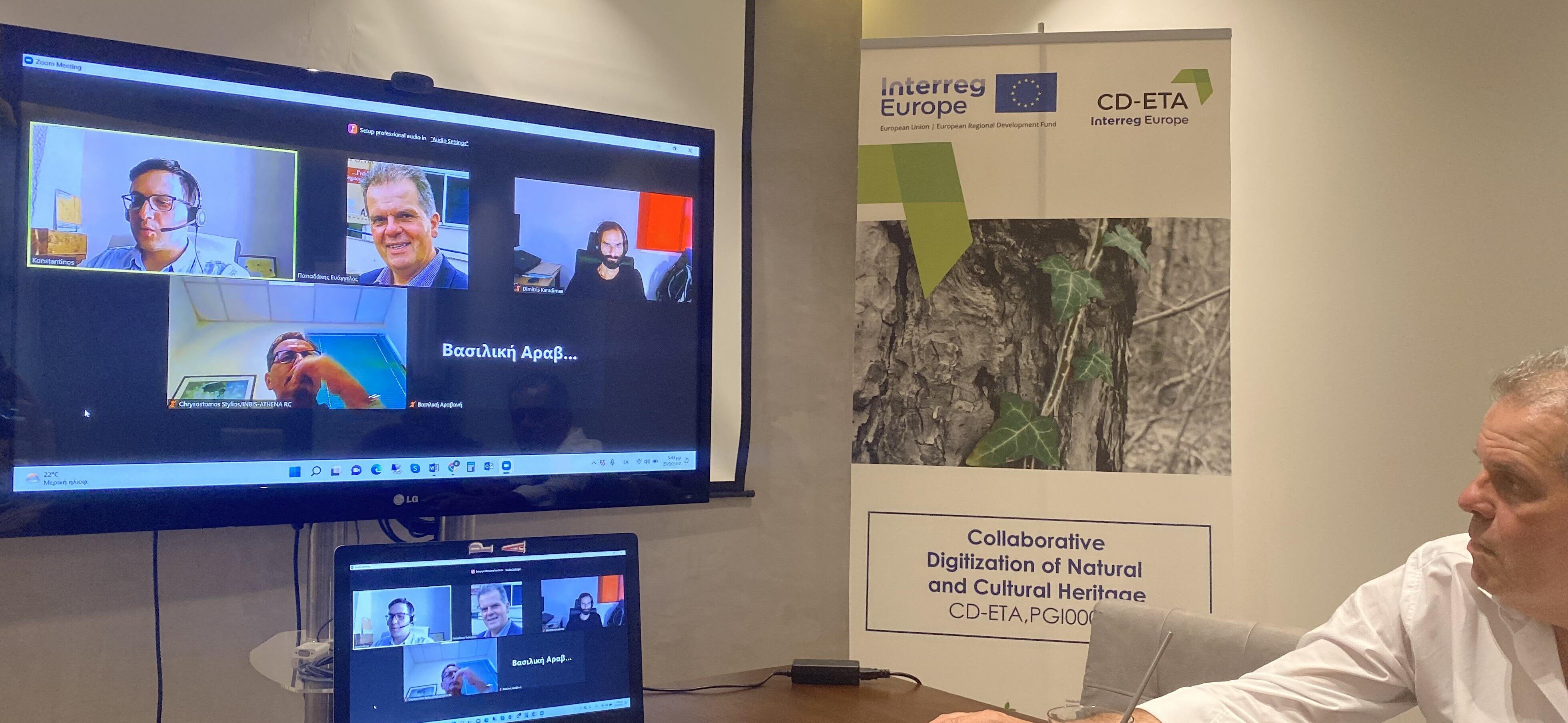
University of Patras met with stakeholders
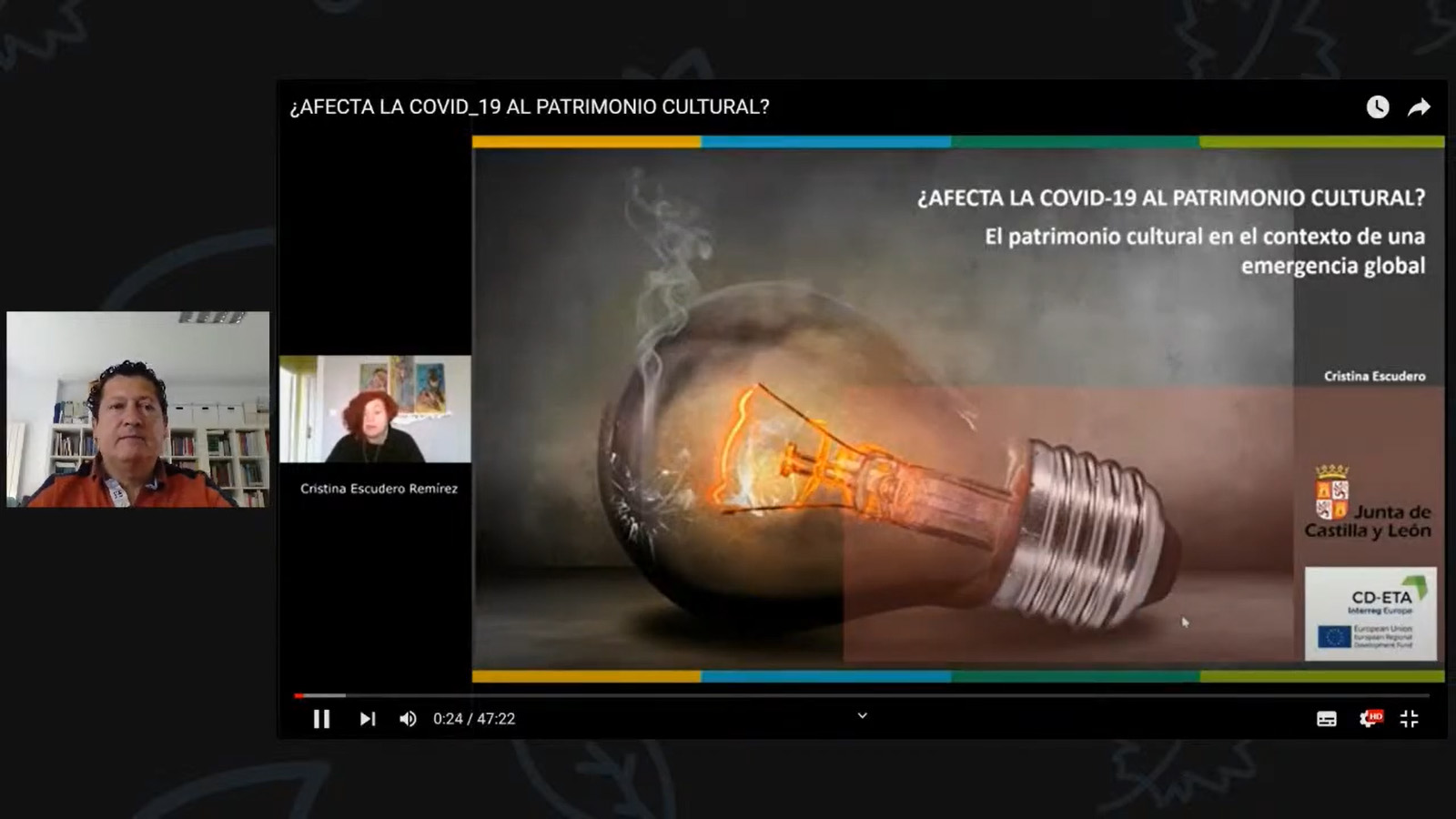
FSMLR organized Stakeholders meeting in the Region of Castilla y Leon
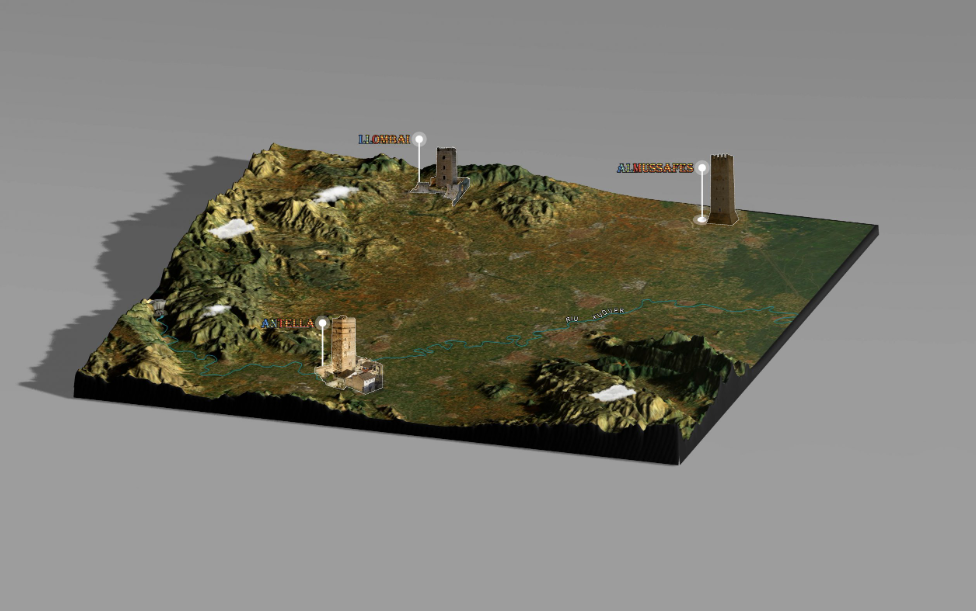
Application of the Pilot Action “INTERACTIVE MAP OF HERITAGE – LA RIBERA”
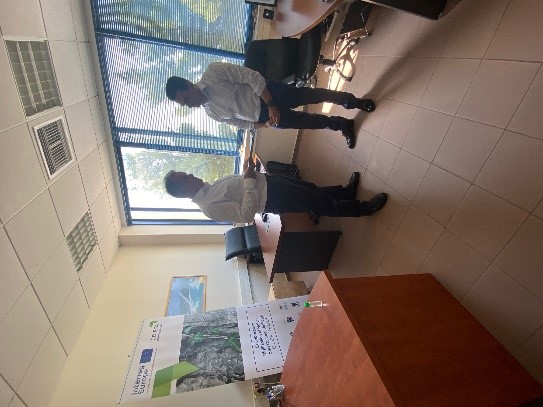
The Greek Minister of Environment and Energy visited University of Patras (CD-ETA Partner 3).